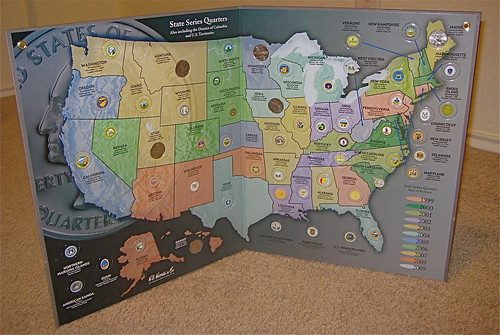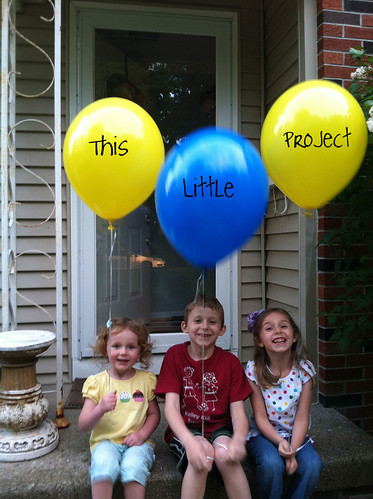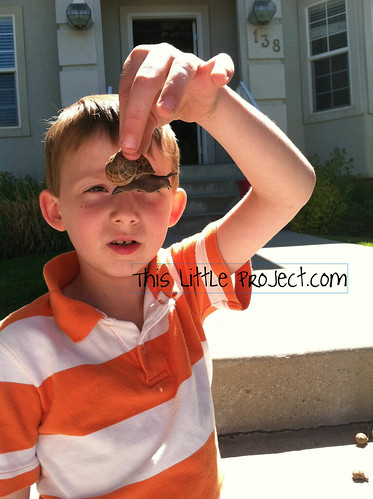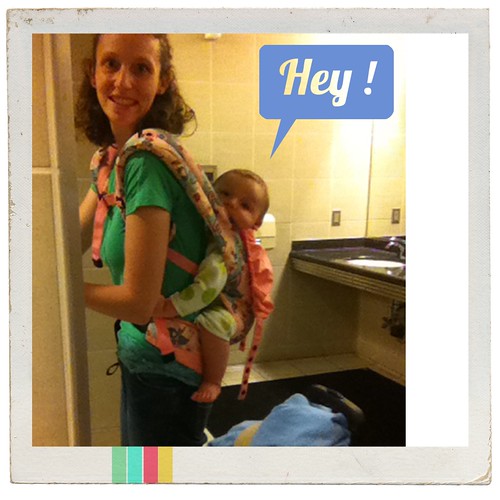
Busy: An Update

Patriotic Geography Learning
With Independence Day coming up, we've been working on learning our country's geography in one of our favorite ways: with music and movement!
I love how this video shows the shapes of the states. It helps her to "see" the state she is singing about and now she can point to and name all her states on a map too.



Cinco de Mayo and Mexico Learning
One of the things that I love about being a musician and a dancer is that it brings me full circle in what I am learning about. It's one thing to read about a place in a book. But if you really want to get to know a people you've got to listen to their music and language and watch (and try!) the movements of their people's dance. That's where you will find a true reflection of a people's traditions and culture.



How to Make a Wall Map to Color

We love to color at our house. So when we were learning about where things are, it just made sense to make a wall map to color. We've made a United Staes Wall Map and World Wall Map.

Want to make one too?
I started by deciding how much room I had on my wall. For my world map, I had a long space but only enough height for three pieces of paper. When I was making my U.S. map, width was the limiting factor. I only had room for 6 paper widths which made for a map 3 paper heights high as well.
Then in my printer menu I used the option for scaling the image. I played around with this in my printer preview until it was the size I needed for my wall. The scaling for a wall map will likely be between 500% and 900%. For my world map, I scaled the image to 800% and printed out pages 1-24 making a 3x8 paper map.
Around each printed paper there is a white border. Using my glue stick, I glued the pages together; overlapping so that the map line from one page matched the next.
After glueing the pages together, I used my black sharpie to trace the map line of the page underneath onto the border of the page on top so that the map lines are continuous.
We've been using our world map with Confessions of a Homeschooler's Expedition Earth Animals.
What will you make a map of?

A Quirky Way to Teach Geography



Game: Where in the World?
This is a fun game to play with any ball and a map. We used our blow up globe ball. You can prepare questions ahead of time or just play as you go.

Just say the name of a country and throw the ball to the next person. That person can name the capital or say another country before passing it on, depending on how you play. It's a great way to learn about different places on the Earth. Point them out on a map too before you pass the ball. You can also play it using names of states, cultural foods, or languages.

For other Earth learning ideas, click on the "Earth Day" category on the sidebar. Happy globetrotting!
Celebrating the Earth
 At our house a party is much more complete with cupcakes. I'll show you how to make some fun Earth Cupcake Toppers for yours. Above is one side of the cupcake topper, below (scroll down) is the other side.
At our house a party is much more complete with cupcakes. I'll show you how to make some fun Earth Cupcake Toppers for yours. Above is one side of the cupcake topper, below (scroll down) is the other side. Here are the other supplies you will need: pen, red marker or heart stickers, toothpicks, glue stick, an extra sheet of paper for the back side, and EITHER a 1 3/4" circle punch OR a paper cutter. Scissors work too :)
Here are the other supplies you will need: pen, red marker or heart stickers, toothpicks, glue stick, an extra sheet of paper for the back side, and EITHER a 1 3/4" circle punch OR a paper cutter. Scissors work too :)
 If you don't have the circle punch, no worries-notice how I chose a square photo of the Earth for you? Just cut them out on your paper cutter (or use scissors.) You will need to cut squares the same size to go on the back of the toppers.
If you don't have the circle punch, no worries-notice how I chose a square photo of the Earth for you? Just cut them out on your paper cutter (or use scissors.) You will need to cut squares the same size to go on the back of the toppers. You will want to draw the heart on the blank side BEFORE you glue it on. It's easier that way.
You will want to draw the heart on the blank side BEFORE you glue it on. It's easier that way.
This is a fun game to play with any ball and a map. We used our blow up globe ball.

Just say the name of a country and throw the ball to the next person. That person can name the capital or say another country before passing it on, depending on how you play. It's a great way to learn about different places on the Earth. Point them out on a map too before you pass the ball. You can also play it using names of states, foods, or languages.
 Tomorrow is Earth Day...stay tuned for another Earth Little Project.
Tomorrow is Earth Day...stay tuned for another Earth Little Project.Teaching Kids to Love the Earth

Tomorrow is Earth Day. We've been prepping for our celebration this past week. Without even knowing that our Nana just sent the kids these great blankets. She knows that we love geography around here. The kids are LOVING them and it's fun to cozy up with the earth this way.
Here are a few of my favorite thoughts from the book:
p.10 "Many members of my generation grew into adulthood taking nature’s gifts for granted; we assumed (whe we thought of it at all) that generations to come would also receive these gifts. But something has changed. Now we see the emergence of what I have come to call nature-deficit disorder. This term is by no means a medical diagnosis, but it does offer a way to think about the problem and possibilities-for children, and for the rest of us as well.
My own awareness of the transformation began in the late 1980’s, during research for Childhood’s Future, a book about the new realities of family life. I interviewed nearly three thousand children and parents across the country, in urban, suburban, and rural areas. In classrooms and living rooms, the topic of children’s relationship with nature sometimes surfaced.
In many classrooms I heard variations on that answer. True, for many children, nature still offers wonder. But for many others, playing in nature seemed so ….Unproductive. Off-limits. Alien. Cute. Dangerous. Televised."
p. 44 "…Edward O. Wilson and the ecopsychology movement are on to something. She calls for a common-sense approach, one that recognizes “the positive effects of involvement in nature on health, concentration, creative play, and a developing bond with the natural world that can form a foundation for environmental stewardship.
The idea that natural landscapes, or at least gardens, can be therapeutic and restorative is, in fact, an ancient one that has filtered down through the ages."
p. 120 "We can now look at it this way: Time in nature is not leisure time; it’s an essential investment in our children’s health. (and also, by the way, in our own)."
 Jay and Kay had a great time digging in the dirt with spoons and then planting seeds in these little pots. Dirt is such a great medium for discovery!
Jay and Kay had a great time digging in the dirt with spoons and then planting seeds in these little pots. Dirt is such a great medium for discovery!
p. 109 "This we know: As the sign over Alber Einstein’s office at Princeton University read, “Not everything that counts can be counted, and not everything that can be counted counts.” We don’t have to wait for more, needed, research to act on common sense, or to give the gift of nature-even when it might seem to be too late."

p.310 "We have such a brief opportunity to pass on to our children our love for this Earth, and to tell our stories...the adventures we’ve had together in nature will always exist."
“This book is an absolute must-read for parents.” –The Boston Globe
"The simplest, most profound, and most helpful of any book I have read on the personal and historical situation of our children, and ourselves, as we move into the twenty-first century.”-Thomas Berry, author of The Dream of the Earth

Map Munching

We call our new game: "Map Munching."
It's a great way to make snack time educational. Plus, there is a built-in reward system!
I've blogged before about Jay's love of geography. Like anyone, he forgets things if he doesn't review. The challenge is to keep the learning of geography fresh, while reviewing. The same old thing just won't do. If you (the Mom) need a geography refresher, jump in and play too. You can both have fun with this game we made up today :)
We started with the states: Cover your map (this one is from the $1 spot at Target) with one snack on each state. Ask your child to find your home state. If he does, he gets the snack that is sitting on it :) You can branch out from there according to your child's age and attention span.

Want to play too?
You need: a map (see links below to print one out), and some small snacks like: cheerios marshmallows, trail mix, etc.
Ideas for ways to play Map Munching:
Identify the State:
2-Use geographic regions, like: west, midwest, southwest, New England, East, southeast.
3-Repeat. Repetition really is the key. You can use snack time again tomorrow, or another way to review. Just keep at it. You will be surprised what children can remember.
Identify the Country:
1-Put snacks on a few countries and practice just the same ones until your child learned them. Ask your child to find your home country. If he does, he gets the snack that is sitting on it :) Repeat with other countries.
2- Use geographic areas such as Continents to break it down.
3-Work on your home country/state first and then branch out from there. Utilize what your child is familiar with. Does a relative or friend live in a certain place? Talk about it. Look at pictures of that place.
4-Repeat. Repetition really is the key. You can use snack time again tomorrow, or another way to review. Just keep at it. You will be surprised what children can remember.
Identify the Capitals:
1-Put snacks on a few capitals (countries or state capitals) and practice just the same ones until your child has learned them. Ask your child to find your country's capital or your state's capital (depending on which game you are playing). If he does, he gets the snack that is sitting on it :) Repeat with others.
2-Start on your home country/state CAPITAL first and then branch out from there. Utilize what your child is familiar with. Does a relative or friend live in a certain capital city that you can talk about and see photos of?
3-Repeat. Repetition really is the key. You can use snack time again tomorrow, or another way to review. Just keep at it. Geography is FUN! You will be surprised what children can remember.
{Little Project Tip} We used a Children's Atlas (Border's Bargain Book) open to different pages today but I want to laminate some maps to use for this and another geography idea I have brewing...so stay tuned!
Do Mom and Dad want to join in the geography fun? Get a map too and make it a race!
They say that the best learning happens when your child is having fun. A full belly helps too :)
That was a fun learning Little Project. Hope you can use it too!
UPDATE: Renee left a comment about playing Don't Eat Pete too-great idea! I can just hear it now, "Don't eat Spain! or "Arizona!"
P.S. For more educational games, check out my links in the left side bar.




















